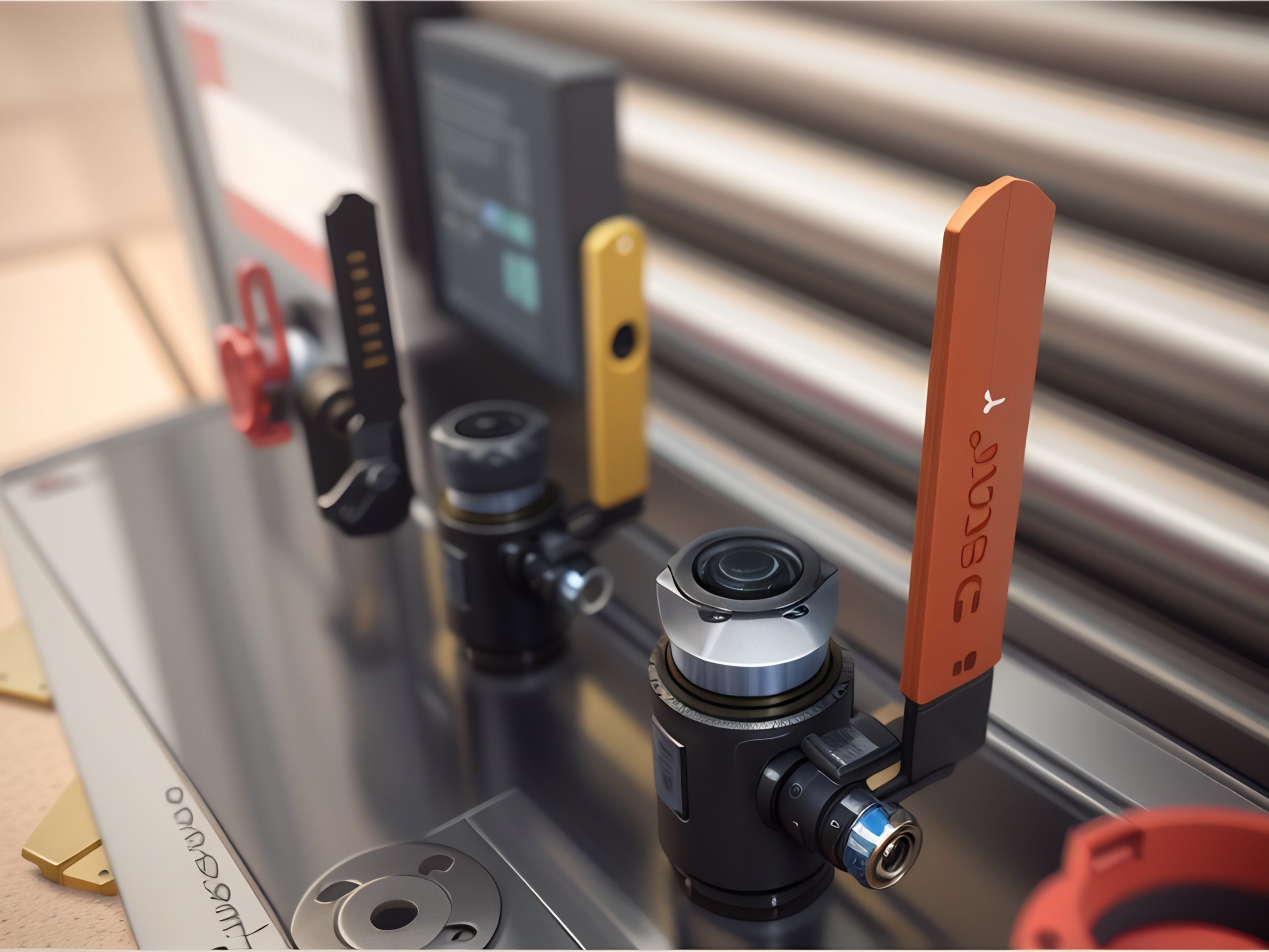Ball Valve Structure
There are various structures of ball valves, but they are fundamentally similar, all featuring a spherical core as the opening and closing element. The essential components include a valve seat, ball, sealing ring, valve stem, and other driving mechanisms. The valve achieves opening and closing by rotating the ball through 90 degrees using the valve stem. In pipelines, ball valves are used for shut-off, distribution, adjusting flow rates, and changing the direction of the medium. The choice of valve seat sealing varies depending on the different working conditions. In the O-type ball valve, a ball with a central through-hole is installed inside the valve body, with the ball having a through-hole of the same diameter as the pipeline. The ball can rotate within the sealing seat, and there are ring-shaped elastic bodies on both sides in the direction of the pipeline to achieve sealing. The V-type ball valve has a ball core with a V-shaped structure, and the valve core is a 1/4 spherical shell with a V-shaped notch on top. It features a large flow capacity, extensive adjustable range, shear force, and tight closure, making it particularly suitable for conditions with fluid substances containing fibers.
The structure of the O-type ball valve
The O-type ball valve has a ball installed inside the valve body with a central through-hole, and the ball has a through-hole with a diameter equal to the pipeline diameter. The ball can rotate within the sealing seat, and on both sides in the direction of the pipeline, there are ring-shaped elastic bodies to achieve sealing. By rotating the ball 90°, the direction of the through-hole can be changed, thereby achieving the opening and closing of the ball valve. O-type ball valves can be designed as floating or fixed, with relative moving parts using materials with extremely low friction coefficients for self-lubrication. This design results in low operating torque. Additionally, the long-term sealing of the sealing lubricant makes the operation more flexible. The advantages of O-type ball valves are as follows:
1. O-type ball valves have low fluid resistance.
O-type ball valves generally have two structures: full bore and reduced bore. Regardless of the structure, the flow resistance coefficient of ball valves is relatively small. Conventional ball valves are straight-through, also known as full-flow ball valves, with a passage diameter equal to the pipe inner diameter. The resistance loss is only the frictional resistance of the same length of the pipe. Among all valves, this type of ball valve has the smallest fluid resistance. There are two ways to reduce the resistance of the pipeline system: one is to reduce the fluid flow velocity by increasing the pipe diameter and valve diameter, which will significantly increase the cost of the pipeline system. The other is to reduce the local resistance of the valve, and the ball valve is the best choice.
2. O-type ball valves switch quickly and conveniently.
The ball valve completes full opening or closing with just a 90-degree rotation, allowing for rapid opening and closing.
3. O-type ball valves have excellent sealing performance.
The majority of ball valve seats, including O-type ball valves, are manufactured using elastic materials such as polytetrafluoroethylene (PTFE), commonly known as soft-seated ball valves. Soft-seated ball valves exhibit excellent sealing performance, and they do not require high surface roughness or machining precision for valve sealing surfaces.
4. O-type ball valves have a long lifespan.
Due to the excellent self-lubricating properties of polytetrafluoroethylene (PTFE or F4) and the low friction coefficient with the ball, O-type ball valves exhibit minimal friction during operation. Improved manufacturing processes have reduced the roughness of the ball, significantly enhancing the lifespan of the ball valve.
5.O-type ball valves have high reliability.
A pair of sealing surfaces, the ball, and the seat, do not experience abrasion or rapid wear; After changing the valve stem to an internal type, the potential risk of the valve stem flying out due to loosening under fluid pressure is eliminated; Ball valves with antistatic and fire-resistant structures can be used in pipelines for the transportation of oil, natural gas, and gas.
The core (ball) of the O-type ball valve is spherical, and from a structural perspective, the sealed ball seat is embedded on the side of the valve body during sealing. Relative moving parts use materials with extremely low friction coefficients for self-lubrication, resulting in low operating torque. Additionally, the long-term sealing of the sealing lubricant makes the operation more flexible. Generally used for two-position adjustment, the flow characteristic is quick opening.
When the O-type ball valve is fully open, both sides are unobstructed, forming a straight pipe passage, providing bidirectional sealing and optimal “self-cleaning” performance. It is suitable for applications where the medium is particularly dirty and contains fibers in two-position cut-off scenarios. The ball core experiences friction with the valve during the opening and closing process. The sealing between the ball core and the valve seat is achieved through the pre-tightening sealing force of the seat pressing against the ball core. Due to the excellent mechanical and physical properties of the soft-seated valve seat, its sealing performance is outstanding.
The structure of the V-type ball valve
The core of the V-type ball valve features a V-shaped structure, with the core being a 1/4 spherical shell and an opening with a V-shaped notch. It has a large flow capacity, a wide adjustable range, shear force, and can provide a tight closure. This design is especially suitable for working conditions where the fluid contains fibrous materials. Typically, V-type ball valves are single-sealed ball valves and are not suitable for bidirectional use.
The V-shaped edge is designed to cut off impurities. During the rotation of the ball, the V-shaped cutting edge of the ball intersects with the valve seat, cutting off fibers and solid particles in the fluid. In contrast, conventional ball valves lack this function, making it easy for fiber impurities to get stuck during closure, causing significant inconvenience for maintenance. However, the core of a V-type ball valve is not susceptible to fiber blockage. Additionally, due to the flange connection form, the valve is easy to disassemble without requiring special tools, making maintenance simple and straightforward.
When the valve is closed, the V-shaped notch creates a dovetail scissor action with the valve seat. This not only provides a self-cleaning function but also prevents the ball core from getting stuck. The valve body, valve cover, and valve seat all adopt a metal point-to-point structure. Moreover, the valve stem spring with a low friction coefficient is used, resulting in low operating torque and stable operation.
The V-type ball valve is a type of right-angle rotary structure that facilitates flow regulation. Depending on the V-angle of the V-type ball, it can achieve different degrees of proportionality. Typically, the V-type ball valve is paired with a valve actuator and positioner to enable proportional control. The V-shaped core is highly suitable for various regulating scenarios, offering a large rated flow coefficient, high adjustability, excellent sealing effects, sensitive adjustment performance, compact size, and the option for vertical or horizontal installation. It is applicable for controlling gases, steam, liquids, and other media.
The V-type ball valve features a right-angle rotary structure composed of a V-shaped valve body, pneumatic actuator, positioner, and other accessories. It exhibits an inherent flow characteristic that approximates a percentage. With a dual-bearing structure, it has a low startup torque, excellent sensitivity, rapid response, and exceptional shear capability.

